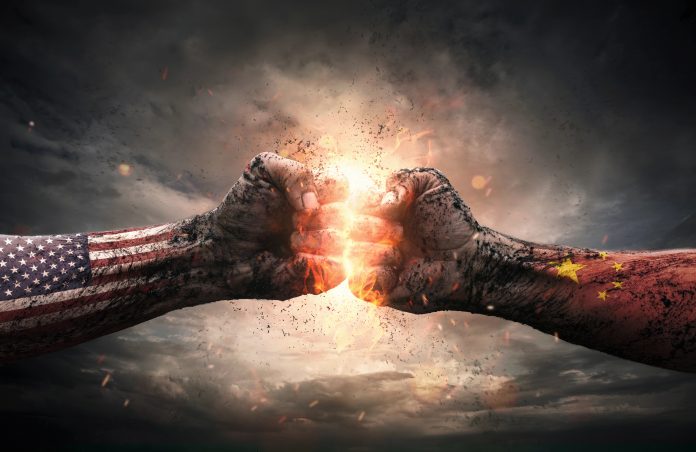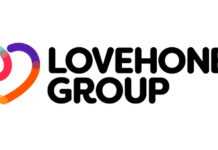Josh Ortiz of XR Brands, via his “Dear DadBodDom“ SE Column, addresses concerns adult retailers may have over the current state of tariffs.
(NOTE: This story was written by Josh Ortiz and appears in the June 2025 issue of SE.)
Q: Dear Dad Bod Dom, I’m just going to say it — I’m nervous. This trade war and tariffs situation has me worried about the future of my business and our industry. As a small business owner, I think I kind of understand tariffs on my level, but I don’t know how to translate that to my customers, who balk at price increases, even minimal ones. How can I compete with online retailers or just stay afloat in general? – Nervous in Nevada
A: Oh, my Nervous Love, me too. I think a lot of us are feeling the same mix of whiplash and uncertainty. What doesn’t help is having a thousand different renditions of the same song, none of them quite hitting the right note. Let’s talk about tariffs: who they impact, how they work, and how we can not only survive, but thrive.
 First? Breathe. Deeply. Check your shoulders and lower those heifers from your earlobes. Unclench your jaw. And know this: the pendulum swings, it doesn’t stick. I know it feels impossible right now. But this is just that is, a moment.
First? Breathe. Deeply. Check your shoulders and lower those heifers from your earlobes. Unclench your jaw. And know this: the pendulum swings, it doesn’t stick. I know it feels impossible right now. But this is just that is, a moment.
Now that we’ve got our brains a little less scrambled, let’s talk about what a tariff is and what it’s not. A tariff isn’t a static number we can always predict, but it is something we feel. While that may not be terribly encouraging, take comfort in this, as of this morning, May 12, 2025, the tariff on Chinese imports is on a 90-day hold at 30%, down from what had been a staggering 145%.
Let’s break down what that means for manufacturers, and how that trickles down to the end customer. Then we’ll work back up from there to not just keep your business going, but to drive it forward.
Since I’m terrible at math, we’re going to use easy numbers, say there’s a 100% tariff. If I, as a manufacturer, have a container on a ship headed to the U.S. from China, and we get hit with that 100% tariff, it usually starts with an invoice from the original factory. They inform us that in order to release the container into the U.S., they need to collect an additional percentage, that’s the tariff. So if the total product value is $1 million, the tariff tacks on another $1 million just to get it off the ship.
That $1 million worth of inventory now costs $2 million to bring into the U.S. economy. Larger businesses can absorb that hit short-term, but long-term? That costs has to be covered, so it moves down the pike to the end consumer via a price increase at the manufacturing level, which leads to an increase at the distribution level, and ultimately an increase at the retail level to continue to sustain business and pay your overhead.
So ask yourself, is a 145%, 100%, 75% or even 50% tariff sustainable in the long term? Is it good business? The answer is absolutely not. We know it. The American public knows it. The global market knows it. That’s why we’re seeing the 90-day hold now. The 145% rate was is unsustainable, it simply can’t continue. Whether the adjustment comes from our side or theirs, it is happening. It needs to.
The way we translate this to customers is by addressing their real concern, “Am I paying more than this item is worth?” The word “worth” is powerful and wildly subjective. It’s our job to show them they are worth the investment and give people permission to experience pleasure in the ways that affirm them. Their pleasure, their happiness, their health, it all matters.
We need to pivot, again, in how we interact with customers. They don’t need you to go over functions and the difference between PVC and silicone in the first four minutes. They need permission to dream. They need to be given permission to fantasize, to imagine and to purchase. If we change our mindset around “the purchase and the price” and shift it to making sure we are helping our customers and community feel affirmed, We’ll change the entire game.
What does that even look like? What would it feel like? It looks like creating a safe, judgment-free space where needs and wants are not mutually exclusive, where they can and often are, the same thing. Our job is to let people know it’s OK to spend money on themselves and their well-being. We already know that (good) sex and masturbation are like endorphins for our brain, and offer physical and mental health benefits. Orgasms can help with sleep, stress relief and mood regulation. For penis owners, prostate orgasms can reduce inflammation, risk of dysfunction and reduce the risk of prostate disease. For vulva owners, endorphins from orgasms can ease menstrual cramping. For all humans, masturbation boosts self-awareness, improves sexual health and may even help the immune system.
Making sure customers leave with what they need, not just what they settle for, helps reduce guilt. Reassure them the way you’d want to be reassured in that very same situation. Think of a time when you really wanted something, like a new pair of shoes and some rando decides to tell you that you don’t need them now it has a string of guilt attached to it. A compliment or gentle affirmation from a clerk might’ve changed everything, right? It ends the internal debate. You feel seen. Heard. Understood. Affirmed.
Temu and Amazon can’t offer that, but you can.
Think of how many times we add something to our cart and it sits there for a hundred moons because we don’t really need it? In person, we can make the leap from the cart to the counter to their car that much easier.
Give them what AI, robots and automated checkouts never can, permission to love themselves enough to invest in themselves, and you’ll have that repeat customer, every single time. – TDBD
Josh is a Sex Educator & Brand Ambassador in the pleasure product industry. If you have a question you’d like to see featured in Dear Dad Bod Dom, please email thedadboddom@gmail.com and you may see yours answered next!














You must be logged in to post a comment.